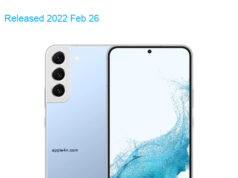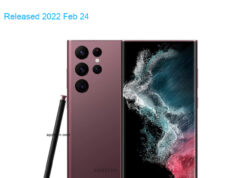| Brand | Kyocera |
| Model | DIGNO SX3 Dual SIM TD-LTE JP KYG02 |
| Released | 2023 Jan 16 |
| Announced | 2022 Dec |
| Hardware Designer | Kyocera Wireless |
| Manufacturer | Kyocera Wireless |
| OEM ID | EB1147 |
| General Extras | Haptic touch feedback |
| Device Category | Smartphone |
| Width | 72 mm |
| Height | 156 mm |
| Depth | 10.2 mm |
| Dimensions | 2.83×6.14×0.4 inches |
| Mass | 171 g |
| Platform | Android |
| Operating System | Google Android 13 (Tiramisu) |
| Software Extras | Voice Command , Navigation software , Face Recognition |
| CPU Clock | 2200 MHz |
| CPU | MediaTek Dimensity 700 MT6833V/ZA, 2020, 64 bit, octa-core, 7 nm, ARM Mali-G57 GPU |
| RAM Type | LPDDR4x SDRAM |
| RAM Capacity (converted) | 4 GiB RAM |
| Non-volatile Memory Interface | UFS 2.1 |
| Non-volatile Memory Capacity (converted) | 64 GB ROM |
| Display Notch | 1-notch |
| Display Diagonal | 155 mm |
| Resolution | 1080×2400 |
| Horizontal Full Bezel Width | 8.39 mm |
| Display Area Utilization | 80.0% |
| Pixel Density | 431 PPI |
| Display Type | Color IPS TFT LCD display |
| Number of Display Scales | 16.8M |
| Scratch Resistant Screen | DragonTrail |
| Graphical Controller | ARM Mali-G57MP2 |
| GPU Clock: | 955 MHz |
| A/V Out | No |
| Microphone(s) | stereo |
| Loudspeaker(s): | mono |
| Audio Output: | Yes |
| Supported Cellular Bands | GSM900 , GSM1800 , GSM1900 , UMTS2100 (B1) , UMTS1900 (B2) , UMTS1700/2100 (B4) , UMTS850 (B5) , UMTS900 (B8) , LTE2100 (B1) , LTE1900 (B2) , LTE1800 (B3) , LTE1700/2100 (B4) , LTE850 (B5) , LTE900 (B8) , LTE700 (B12) , LTE800 (B18) , LTE800 (B19) , LTE700 (B28) , TD-LTE2500 (B41) , TD-LTE3500 (B42) , NR1800 (N3) , NR700 (N28) , TD-NR3700 (N77) , TD-NR3500 (N78) , TD-NR4700 (N79) bands |
| Supported Cellular Data Links | GPRS , EDGE , UMTS , HSUPA , HSUPA 5.8 , HSDPA , HSPA+ 21.1 , HSPA+ 42.2 , LTE , LTE 100/50 , LTE 150/50 , LTE 225/50 , LTE 300/50 , NR 1500 data links |
| SIM Card Slot | e-SIM |
| Complementary Phone Services | Voice transmission , Voice speaker , Vibrate , VoLTE |
| SAR (head) | 0.423 W/kg |
| SAR (body) | 0.614 W/kg |
| Dual Cellular Network Operation | Dual standby |
| Sec. Supported Cellular Networks: | GSM900 , GSM1800 , GSM1900 , UMTS2100 (B1) , UMTS1900 (B2) , UMTS1700/2100 (B4) , UMTS850 (B5) , UMTS900 (B8) , LTE2100 (B1) , LTE1900 (B2) , LTE1800 (B3) , LTE1700/2100 (B4) , LTE850 (B5) , LTE900 (B8) , LTE700 (B12) , LTE800 (B18) , LTE800 (B19) , LTE700 (B28) , TD-LTE2500 (B41) , TD-LTE3500 (B42) , NR1800 (N3) , NR700 (N28) , TD-NR3700 (N77) , TD-NR3500 (N78) , TD-NR4700 (N79) |
| Sec. Supported Cellular Data Links: | GPRS , EDGE , UMTS , HSUPA , HSUPA 5.8 , HSDPA , HSPA+ 21.1 , HSPA+ 42.2 , LTE , LTE 100/50 , LTE 150/50 , LTE 225/50 , LTE 300/50 , NR 1500 |
| Sec. SIM Card Slot | Nano-SIM (4FF) |
| Touchscreen Type | Capacitive multi-touch screen |
| Expansion Interfaces | TransFlash , microSD , microSDHC , microSDXC |
| USB | USB 2.0 |
| USB Services | USB charging , USB fast charging , USB OTG 1.0 , USB OTG 1.3 , USB OTG 2.0 , USB PD , USB PD 2.0 |
| USB Connector | USB C reversible |
| Bluetooth | Bluetooth 5.3 |
| Wireless LAN | 802.11a , 802.11b , 802.11g , 802.11n , 802.11ac |
| Wireless Services | Wi-Fi Tethering , Wi-Fi Calling |
| NFC | NFC A , NFC B , FeliCa |
| FM Radio Receiver | No |
| Complementary Satellite Services | Simultaneous GPS , A-GPS , Geotagging , QuickGPS , QZSS |
| Supported GLONASS protocol(s) | L1OF |
| Supported Galileo service(s) | E1 |
| Supported BeiDou system (BDS) | B1I BeiDou receiver |
| Camera Placement | Rear |
| Camera Image Sensor | BSI CMOS |
| Image Sensor Pixel Size | 1.12 micrometer |
| Number of effective pixels | 8.0 MP camera |
| Zoom | 1.0 x optical zoom |
| Focus | PD AF |
| Video Recording | 1920×1080 pixel |
| Flash | single LED |
| Camera Extra Functions | EIS , EIS (video) , HDR photo , Slow motion video , Burst mode , Macro mode , Panorama Photo , Face detection , Face tagging , Smile detection , Face retouch |
| Aux. Camera Image Sensor | No |
| Aux. 2 Camera Image Sensor | No |
| Aux. 2 Camera Number of Pixels | 1.9 MP aux. 2 cam |
| Aux. 2 Camera Aperture (W) | f/2.40 |
| Aux. 3 Camera Image Sensor | No |
| Aux. 4 Camera Image Sensor | No |
| Secondary Camera Placement | Front |
| Secondary Camera Sensor | CMOS |
| Secondary Camera Number of pixels | 8.0 MP sec. cam |
| Secondary Video Recording | 1920×1080 pixel |
| Secondary Camera Extra Functions | HDR photo , Burst mode , Face detection , Face tagging , Smile detection , Face retouch |
| Sec. Aux. Cam. Image Sensor | No |
| Built-in compass | Yes |
| Built-in accelerometer | Yes |
| Built-in gyroscope | Yes |
| Additional sensors | FP sensor , L sensor , P sensor |
| Protection from solid materials | 6 Totally protected from dust |
| Protection from liquids | 8 Protected against immersion beyond 1m of depth |
| Protection against mechanical impacts | 150 cm |
| Immersion into liquids (depth limit) | 150 cm |
| Immersion into liquids time limit | 30 min |
| Military Standard Compliance (MIL-STD) | MIL-STD-810H |
| Battery | Li-ion polymer (LiPo) |
| Nominal Battery Capacity | 4500 mAh battery |
| Talk Time: | 34.0 hours |
| Market Countries | Japan |
| Market Regions | Asia |
| Added | 2025-02-08 |
Specifications data description of this 📱Kyocera DIGNO SX3 Dual SIM TD-LTE JP KYG02📱
Title: Kyocera DIGNO SX3 Dual SIM TD-LTE JP KYG02: A Comprehensive Specification Overview
Introduction
Kyocera has long been a prominent player in the mobile device market, and the Kyocera DIGNO SX3 Dual SIM TD-LTE JP KYG02 is no exception. This device offers a robust set of features tailored to meet the demands of modern smartphone users. In this blog post, we’ll delve into the specifications of the Kyocera DIGNO SX3, highlighting its strengths and providing a comprehensive overview of its capabilities.
Lineup
The Kyocera DIGNO SX3 is part of Kyocera’s lineup of high-quality, reliable mobile devices, designed for users who require powerful performance and dependable connectivity. With its Dual SIM TD-LTE support, this device caters to those who require seamless multi-network compatibility.
Design
Featuring a sleek, ergonomic design, the Kyocera DIGNO SX3 offers a comfortable grip and an elegant aesthetic. Its durability is enhanced by Kyocera’s signature robust build quality, ensuring longevity and resistance to daily wear and tear.
🌐 NETWORK: LAUNCH📅
* Network: TD-LTE, FDD-LTE, W-CDMA, GSM
* Launch Date: 2021-12
🏋️ BODY
* Dimensions: 154.5 x 75 x 8.7 mm
* Weight: 172 g
🌈 DISPLAY
* Size: 6.0 inches
* Type: IPS LCD
* Resolution: 1080 x 2160 pixels, 18:9 ratio
🤖 OS 🛠️
* Operating System: Android 11
🚀 Chipset 🔧
* Chipset: MediaTek Helio P35 (MT6765)
💪 CPU 🖥️
* CPU: Octa-core (4×2.3 GHz Cortex-A53 & 4×1.8 GHz Cortex-A53)
🎮 GPU 💻
* GPU: PowerVR GE8320
🧠 MEMORY 🗂️
* RAM: 4 GB
* Storage: 64 GB, expandable up to 512 GB via microSD
📷 CAMERA 🎥
* Rear Camera: 13 MP, f/2.2, PDAF
* Front Camera: 8 MP, f/2.0
🔈 SOUND 🎵
* Loudspeaker: Yes
* 3.5mm Jack: Yes
📡 COMMS 📶
* Wi-Fi: 802.11 a/b/g/n/ac, dual-band
* Bluetooth: 5.0, A2DP, LE
* GPS: Yes, with A-GPS, GLONASS, BDS
* NFC: Yes
* Radio: FM radio
* USB: USB 2.0, Type-C 1.0 reversible connector
💡 FEATURES 🎁
* Sensors: Fingerprint (rear-mounted), accelerometer, proximity, compass
* Battery: Non-removable Li-Po 3000 mAh battery
* Charging: Fast battery charging (Quick Charge 3.0)
* Colors: Black, Silver
🔋 BATTERY🔌
The Kyocera DIGNO SX3 houses a non-removable Li-Po 3000 mAh battery that supports fast charging through Quick Charge 3.0 technology. This powerful battery, combined with the efficient MediaTek Helio P35 chipset, results in excellent battery life, ensuring you stay connected and productive throughout your day.
Conclusion
The Kyocera DIGNO SX3 Dual SIM TD-LTE JP KYG02 is an exceptional device, offering an impressive array of features and specifications. Its robust build quality, reliable connectivity, powerful CPU, and ample memory cater to the needs of users requiring reliable performance.
In conclusion, we invite you to leave a comment and share your thoughts on the Kyocera DIGNO SX3. Whether you’re a current user or considering an upgrade, we’d love to hear about your experiences and opinions. Your feedback and insights are invaluable to us and other readers!








